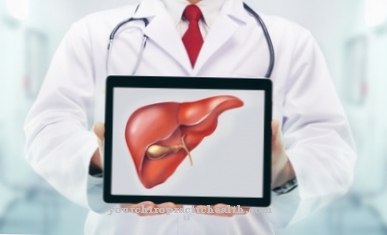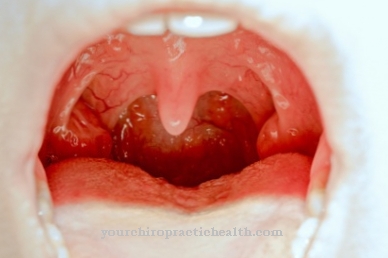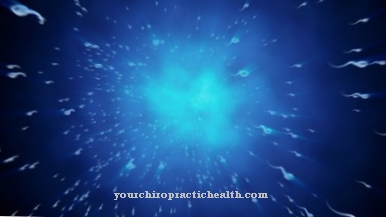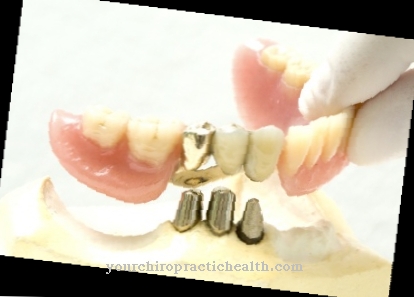In the Photochemotherapy it is a special treatment that combines long-wave UV light with psoralen. The procedure is also called PUVA (Psoralen plus UVA) known.
What is photochemotherapy?

Photochemotherapy is one of the medical procedures in dermatology. It is one of the light therapies. As part of the treatment, long-wave UV light (UVA) is combined with psoralen, which is a basic molecular substance for various natural substances. The therapy is therefore also called psoralen plus UVA (PUVA).
The natural active ingredient psoralen is contained in the essential oils of some plants. Psoralen has the property of sensitizing human skin to UV light. The treatment of photochemotherapy can make the skin more sensitive to subsequent exposure to UVA. In this way, the photosensitizing properties can be used for medical treatments.
Photochemotherapy was used around 3000 years ago in ancient India and Egypt to treat white spot disease (Vitiligo). For this purpose, the skin of the sick person was rubbed with plant extracts. This was followed by exposure to natural sunlight.
Function, effect & goals
In dermatology, in which photochemotherapy is used, a distinction is made between two forms of treatment. These are topical and systemic PUVA therapy. As part of topical photochemotherapy, only the affected areas of the skin are treated.
A cream containing psoralen is used to coat smaller areas of the skin. The cream is then absorbed under a film. The so-called bath PUVA is an alternative. The psoralen can accumulate in the skin during a bath with warm water. The full or partial bath takes 30 minutes. The light sensitization is carried out immediately and has a duration of about 30 minutes. The UV treatment takes place during this period.
Systemic PUVA therapy is when the psoralen is distributed over the entire body of the patient. Two hours before radiation therapy, the patient must take psoralen-containing tablets. Photochemotherapy is one of the most effective light therapies. In the early 1970s, PUVA therapy for the treatment of psoriasis was established. The positive effect is attributed to the reduction of the pathological cell division rate and a suppressing effect on the skin's defense system.
Further areas of application for photochemotherapy are skin diseases such as vitiligo, neurodermatitis, mastocytosis and lichen planus. PUVA therapy can also be used to treat cutaneous T-cell lymphomas, which include Sézary's syndrome and mycosis fungoides. In addition, photochemotherapy is an alternative to UVA1 therapy, which is used against urticaria pigmentosa. Despite opposing opinions, PUVA treatment does not have a positive effect on acne.
Before starting the photochemotherapy, the doctor must thoroughly examine the patient's skin and rule out any possible sensitivity to light that can result from special medication. The same is true for malignant skin tumors.
The minimum phototoxic dose (MPD) is also determined as part of the investigation. The MPD value can be used to indicate the level of the UV dose above which reddening occurs on the skin with a photosensitizer. Once the psoralen has developed its effect, the skin is irradiated with 20 to 30 percent of the minimum phototoxic dose, which is gradually increased as the PUVA therapy continues.
So that the eyes are not damaged during the treatment, the patient must protect them with special glasses. The photochemotherapy always takes place on two consecutive days. Then a day off is taken. The PUVA therapy comprises a total of 10 to 30 sessions. As part of a topical cream PUVA treatment, the doctor first applies the light sensitizer 8-methoxypsoralen, using a water-in-oil emulsion. After an exposure time of between 20 and 30 minutes, irradiation with long-wave UVA light can take place. This method is particularly suitable for the treatment of hand eczema that has a smaller area.
The bath PUVA therapy takes place in an 8-methoxypsoralen solution, which has a concentration of 0.5 to 1.0 mg / l. The water should be between 32 and 37 degrees Celsius. After the bath, PUVA irradiation must take place immediately. It is recommended that the treatment be carried out three to four times a week.
Risks, side effects & dangers
Although photochemotherapy is considered very effective, it also carries the risk of risks and side effects, as it is an extremely intense light therapy. There is possibly a risk that the UV light has a carcinogenic effect. It is not uncommon for a phototoxic reaction to occur. This describes a type of sunburn that comes about due to the increased sensitivity to light.
Other possible side effects are keratitis (inflammation of the cornea) or conjunctivitis (conjunctivitis) of the eye, the formation of moles and light-induced aging of the skin. PUVA bath therapy must not be used on children under the age of 12 and pregnant women. The same applies to people who suffer from severe heart disease or who have already had skin cancer. If you take immunosuppressants such as ciclosporin at the same time, there is a risk that severe skin burns will occur and the tissue underneath will be affected.
In particular, systemic photochemotherapy, in which tablets are taken, has a high risk of side effects, to which u. a. Nausea and damage to the liver include. For this reason, this procedure is rarely used.













.jpg)

.jpg)
.jpg)











.jpg)